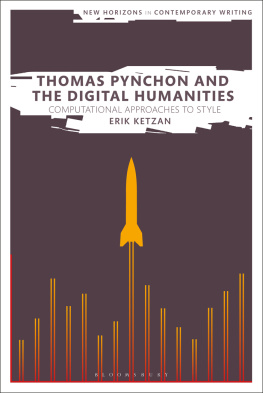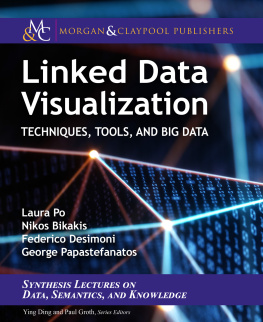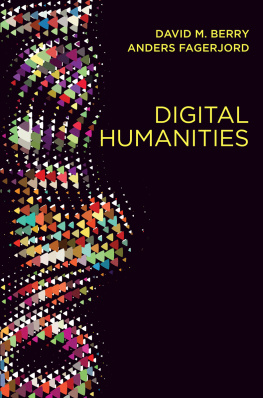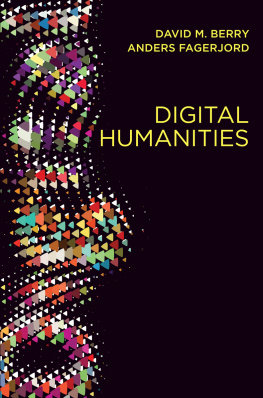All rights reserved. No part of this book may be reproduced in any form by any electronic or mechanical means (including photocopying, recording, or information storage and retrieval) without permission in writing from the publisher.
Names: Drucker, Johanna, 1952- author.
Title: Visualization and interpretation : humanistic approaches to display / Johanna Drucker.
Description: Cambridge, Massachusetts : The MIT Press, 2020. | Includes bibliographical references and index.
Subjects: LCSH: Visual communication. | Graphic arts. | Visual analytics.
Contents
List of Figures
Standard metric (above) and interpretative metric (below), exposing the fallacy of discrete and bounded graphs. [JD]
Layers used to separate data points and record graphical intervention. [JD]
Sequence of argument development in graphical form. [Ibach]
Graphic variables and inflections. [JD]
continued
Generating an affective metric through systematic means. [JD]
Graphical inflection applied to a network diagram. [JD]
continued
Slice technique to provide a view into the complexity of the data concealed in the basic bar chart. [JD]
continued
Point-of-view system introduced into a data visualization. [JD]
The two-way screen concept demonstrated, along with the production of information from graphical activity. [JD]
Original temporal modeling screens. [Original screen shots redrawn by Peter Polack]
Heterochronologies and floating correlation points. [JD]
continued
Conceptual framework for a relational model of chronological visualization. [JD]
Spatial distortion as a result of affective charge. [Eskandar]
Point of view system and human identities positioned with Snow diagram. [Eskandar]
Parallax demonstrated on a cartographic representation. [JD]
Node and edge transformed into nodedge presentation. [JD]
Generating complex data from direct graphical input. [JD]
Comparative ontologies example in table form, floating correlation shown. [JD]
The rich research field correlating documents, timelines, chronologies, and cartographic expressions. [Ibach and JD]
Site comparison to expose some of the enunciative features of an interface. [JD]
Modified interface to show enunciative features. [JD]
Standard interface and popped-out windows to expose enunciative features. [JD]
continued
Graphical features of the 3DH system. [JD]
Dimensions of the 3DH system. [JD]
Projection and point of view as active features of a visualization environment. [JD]
continued
Reductive and complex presentations of information in visualization. [Eskandar]
Innovative approaches to visual analysis: folding and slicing. [JD]
continued
Heat map of text according to readings and markup. [JD]
Split or cut-through of a data set to expose complexities. [JD]
Acknowledgments
Some sections of this work draw on materials from the authors previously published work. All are republished or cited either with explicit permission or in accord with the authors rights guidelines:
Humanities Approaches to Interface Theory, Culture Machine 12 (2011) (by permission).
Humanistic Theory and Digital Scholarship, in Debates in Digital Humanities, ed. Matthew Gold (Minneapolis: University of Minnesota Press, 2012), pp. 8595.
Non-representational Approaches to Modelling Interpretation in a Graphical Environment, Digital Scholarship in the Humanities 33, no. 2 (June 2018) (by permission and guidelines), https://doi.org/10.1093/llc/fqx034 (5300).
Information Visualization and/as Enunciation, Journal of Documentation 73, no. 5 (2017), pp. 903916, https://doi.org/10.1108/JD-01-2017-0004.
Performative Materiality and Theoretical Approaches to Interface, DHQ (Digital Humanities Quarterly) 7, no. 1 (Summer 2013).
Design Agency, Dialectic 1, no. 2 (2017), pp. 1116.
Digital Ontologies: The Ideality of Form in/and Code StorageorCan Graphesis Challenge Mathesis?, Leonardo 34, no. 2 (2001), pp. 141145.
All images are property of Johanna Drucker.
Framework: Creating the Right Tools and Platforms
In the several decades since humanists have taken up computational tools, they have borrowed many techniques from other fields. This has included the appropriation of visualization methods to create charts, graphs, diagrams, maps, and other graphic displays of information. But are these visualizations actually adequate for the interpretative approach that distinguishes much of the work in the humanities? To answer that question, we have to define the features of that interpretative work and identify the ways its assumptions and premises are distinct from those of other research methods. We also have to ask what kinds of attitudes toward knowledge can be expressed with current conventions of visualization and consider alternatives. If, as will be argued here, the activity of modeling interpretation is fundamentally at odds with current methods of information visualization (data display), then how would such interpretative work be structured within a computational environment and a user interface? The challenges are many.
We can start by considering what is being referred to in the phrase information visualization and how it contrasts with that of modeling interpretation. The standard approach to information visualization is to generate a graphic from live or static data. The process is relatively straightforward. A set of quantitative values is charted on a grid, plane, or space governed by a regular, standard metric. Columns, bars, pie charts, points, lines, network diagrams, and so on are all produced in this way. The interpretative work of shaping the data disappears from view in the final result. The image displayed on screen, in print, or through other output devices appears as a statement of fact. The interpretative dimensions of the activity that shaped the data are rendered invisible, not so much concealed as simply missing from view, absent without a trace.
Any statistician or quantitative analyst will freely admit to the interpretative aspects of data creation (choices about sample size, parameterization, and other aspects of statistical and quantitative manipulations). Visualizations are not characterized, for instance, as remediations (translations of documents or objects from analog to digital format). They are not described as the outcome of interpretative parameters (methods of quantification) that translate numerical values into graphical ones. These methods of translation use conventions that may or may not be logically consistent with the display of quantitative information (the scale or measure may have been altered). And often, the process of data creation produces results that are far from the original phenomenon from which it was extracted. But these processes of transformationfrom phenomenon to data and then to displayare rarely documented or noted. Instead, the output is simply called a data visualization, as if the process were unproblematic and as if the data and visualization were one and the same. In general, this is a one-way process, with visualizations generated from (that is,











